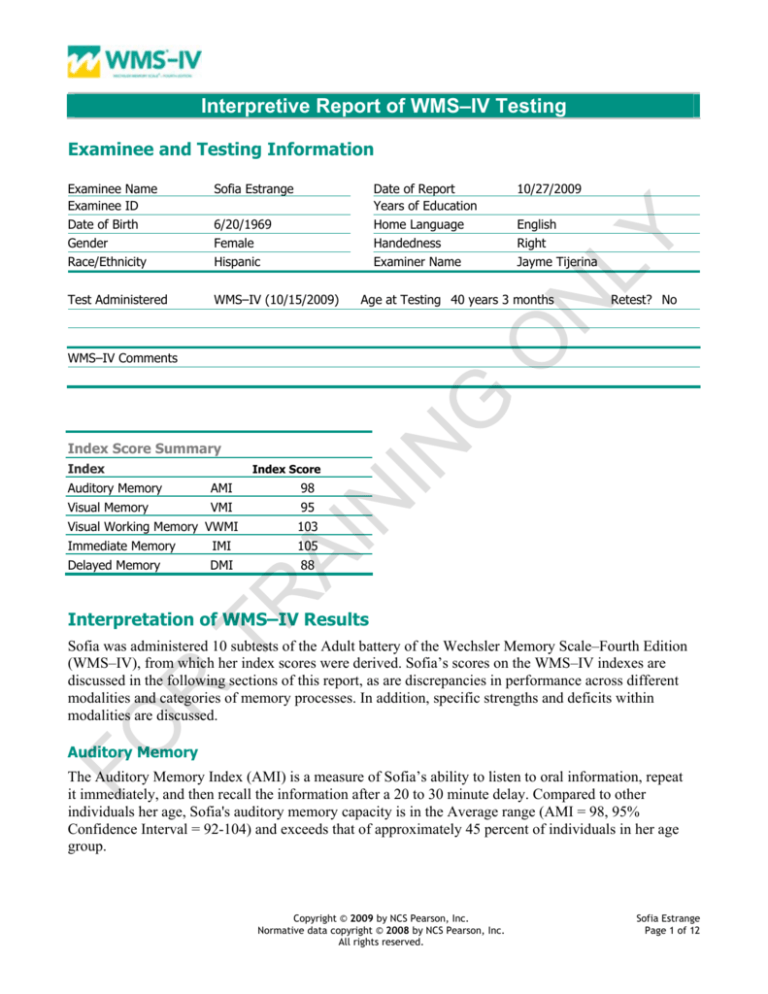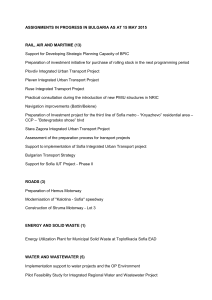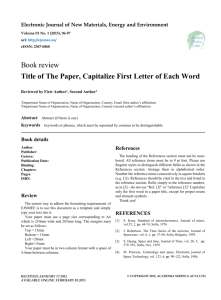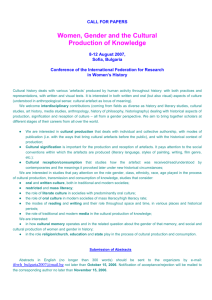
Interpretive Report of WMS–IV Testing
Examinee and Testing Information
Date of Report
Years of Education
Home Language
Handedness
Examiner Name
6/20/1969
Female
Hispanic
Test Administered
WMS–IV (10/15/2009)
10/27/2009
English
Right
Jayme Tijerina
N
LY
Sofia Estrange
Age at Testing 40 years 3 months
Retest? No
O
Examinee Name
Examinee ID
Date of Birth
Gender
Race/Ethnicity
Index Score Summary
Index
Index Score
AMI
Visual Memory
VMI
98
N
Auditory Memory
IN
G
WMS–IV Comments
95
103
Immediate Memory
IMI
105
Delayed Memory
DMI
88
TR
AI
Visual Working Memory VWMI
Interpretation of WMS–IV Results
FO
R
Sofia was administered 10 subtests of the Adult battery of the Wechsler Memory Scale–Fourth Edition
(WMS–IV), from which her index scores were derived. Sofia’s scores on the WMS–IV indexes are
discussed in the following sections of this report, as are discrepancies in performance across different
modalities and categories of memory processes. In addition, specific strengths and deficits within
modalities are discussed.
Auditory Memory
The Auditory Memory Index (AMI) is a measure of Sofia’s ability to listen to oral information, repeat
it immediately, and then recall the information after a 20 to 30 minute delay. Compared to other
individuals her age, Sofia's auditory memory capacity is in the Average range (AMI = 98, 95%
Confidence Interval = 92-104) and exceeds that of approximately 45 percent of individuals in her age
group.
Copyright © 2009 by NCS Pearson, Inc.
Normative data copyright © 2008 by NCS Pearson, Inc.
All rights reserved.
Sofia Estrange
Page 1 of 12
N
LY
The interpretation of Sofia’s AMI score should account for the significant inconsistency in
performance on specific measures within this domain. A closer look at these subtests is warranted.
Within auditory memory, Sofia exhibited a strength on the Logical Memory I subtest. At the same
time, she displayed a weakness on the Verbal Paired Associates II subtest. Logical Memory I required
Sofia to recall specific details of information presented orally in a story format after only a single
exposure. This subtest measures the ability to recall verbal information that is conceptually organized
and semantically related immediately after hearing it (Logical Memory I scaled score = 13). On Verbal
Paired Associates II, Sofia was required to recall novel and semantically related word pairs after a 20
to 30 minute delay. This subtest provides a measure of delayed cued recall for word associations
(Verbal Paired Associates II scaled score = 7).
Visual Memory
G
O
On the Visual Memory Index (VMI), a measure of memory for visual details and spatial location,
Sofia performed in the Average range (VMI = 95, 95% Confidence Interval = 90-101). Sofia's visual
memory capacity exceeds that of approximately 37 percent of individuals in her age group.
N
IN
The interpretation of Sofia’s VMI score should account for the significant inconsistency in
performance on a measure within this domain. A closer look at this subtest is warranted. Within visual
memory, Sofia exhibited a strength on the Visual Reproduction I subtest.
On Visual Reproduction I Sofia was required to view a series of designs and to draw each one from
memory immediately after seeing it. This subtest measures recall for visual information, including the
details and relative spatial relationship among elements of a drawing (Visual Reproduction I scaled
score = 12).
TR
AI
Modality-Specific Memory Strengths and Weaknesses
Some individuals are better at recalling visual information than recalling auditory information, while
for others the reverse is true. Compared to individuals with similar auditory memory capacity, Sofia’s
visual memory performance is in the Average range (37th percentile), indicating no significant
difference between her levels of visual and auditory memory functioning.
Visual Working Memory
FO
R
On the Visual Working Memory Index (VWMI), a measure of her ability to temporarily hold and
manipulate spatial locations and visual details, Sofia performed in the Average range (VWMI = 103,
95% Confidence Interval = 96-110). Sofia’s visual working memory ability exceeds that of
approximately 58 percent of individuals in her age group.
Sofia’s performance on the Spatial Addition subtest was significantly better than her performance on
the Symbol Span subtest, suggesting that her profile of memory functioning within visual working
memory exhibits significant variability. Therefore, a closer look at these two subtests is warranted. On
Spatial Addition, Sofia was shown patterns of blue and red circles on two grids presented
consecutively. She was then required to place cards with different colored circles in a grid according
to a set of rules, based on the grids that she had been shown. This subtest measures spatial working
memory and requires storage, manipulation, and the ability to ignore competing stimuli (Spatial
Copyright © 2009 by NCS Pearson, Inc.
Normative data copyright © 2008 by NCS Pearson, Inc.
All rights reserved.
Sofia Estrange
Page 2 of 12
Addition scaled score = 12). Symbol Span required Sofia to identify a series of novel symbols, in
order from left to right, immediately after seeing the symbols in their correct order. This subtest
measures the capacity to keep a mental image of a symbol and its relative spatial position on the page
in mind (Symbol Span scaled score = 9).
N
LY
Specificity of Episodic Visual Memory Abilities Compared to Visual Working
Memory Abilities
O
Comparing episodic visual memory to visual working memory performance can help determine the
relative influence of visual memory on visual working memory (e.g., to determine if a low VMI score
is due to deficits in visual working memory or to episodic visual memory deficits). Compared to
individuals with similar visual working memory capacity, Sofia’s visual memory performance is in the
Average range (25th percentile), indicating no significant difference between her levels of visual
memory and visual working memory functioning.
Immediate and Delayed Memory
TR
AI
N
IN
G
The Immediate Memory Index (IMI) is a measure of Sofia’s ability to recall verbal and visual
information immediately after the stimuli is presented. Compared to other individuals her age, Sofia's
immediate memory capacity is in the Average range (IMI = 105, 95% Confidence Interval = 99-111)
and exceeds that of approximately 63 percent of individuals in her age group. On the Delayed Memory
Index (DMI), a measure of the ability to recall verbal and visual information after a 20 to 30 minute
delay, Sofia performed in the Low Average range (DMI = 88, 95% Confidence Interval= 82-95).
Sofia's delayed memory capacity exceeds that of approximately 21 percent of individuals in her age
group.
The interpretation of Sofia’s IMI score should account for the significant inconsistency in performance
on a measure within this domain. A closer look at this subtest is warranted. Within immediate
memory, Sofia displayed a relative weakness on the Verbal Paired Associates I subtest. Verbal Paired
Associates I required Sofia to recall novel and semantically related word pairs. This subtest measures
immediate learning of verbal associations over multiple exposures (Verbal Paired Associates I scaled
score = 8).
FO
R
The interpretation of Sofia’s DMI score should account for the significant inconsistency in
performance on a measure within this domain. A closer look at this subtest is warranted. Within
delayed memory, Sofia exhibited a relative strength on the Logical Memory II subtest. On Logical
Memory II, Sofia was asked to recall specific details of information presented orally in a story format
in a single exposure. This subtest measures the ability to recall verbal information that is conceptually
organized and semantically related after a delay (Logical Memory II scaled score = 11).
Retention of Information
Some individuals lose information between immediate and delayed recall, while others actually
improve their memory performance over time. The overall amount of forgetting and consolidation that
occurred between the immediate and delayed tasks is indicated by the level of Sofia’s delayed memory
performance given her immediate memory performance. Compared to individuals with a similar level
Copyright © 2009 by NCS Pearson, Inc.
Normative data copyright © 2008 by NCS Pearson, Inc.
All rights reserved.
Sofia Estrange
Page 3 of 12
of immediate memory capacity, Sofia’s delayed memory performance is in the Extremely Low range
(1st percentile), indicating that her delayed memory is much lower than expected, given her level of
initial encoding.
Specific Auditory Memory Abilities
N
LY
Auditory Process Scores
O
On a measure of her ability to answer specific questions about details from a previously heard story,
Sofia performed in the average range (LM II Recognition cumulative percentage = 26-50%). Sofia
performed in the borderline range on a measure of her ability to identify previously presented word
associations (VPA II Recognition cumulative percentage = 3-9%). When asked to recall as many
words as she could remember from a previously presented list of word pairs, without being required to
correctly associate the words, Sofia performed in the average range (VPA II Word Recall scaled score
= 10).
Auditory Forgetting and Retrieval Scores
TR
AI
N
IN
G
The degree to which Sofia may benefit from story details being presented in a recognition format
instead of a free recall format can be determined by comparing her delayed cued recall performance to
that of individuals with a similar level of recognition memory (LM II Recognition vs. Delayed Recall
contrast scaled score = 12). This comparison suggests that Sofia is able to retrieve auditory
information from memory as well as expected, given her level of recognition memory. The degree to
which Sofia forgot the story details she learned during the immediate condition of Logical Memory I
can be determined by comparing her delayed recall performance to that of others with a similar level
of immediate recall (LM II Immediate Recall vs. Delayed Recall contrast scaled score = 7). This
comparison indicates that Sofia displayed a higher than expected rate of forgetting, given her
immediate memory performance.
FO
R
The degree to which Sofia may benefit from word associations being presented in recognition format
versus cued recall can be determined by comparing her delayed cued recall performance to that of
individuals with a similar level of recognition memory (VPA II Recognition vs. Delayed Recall
contrast scaled score = 11). Based on this comparison, Sofia is able to retrieve auditory information
from memory as well as expected, given her level of recognition memory. The degree to which Sofia
forgot the word associations she learned during immediate recall of Verbal Paired Associates I can be
determined by comparing her delayed recall performance to that of others with a similar level of
immediate recall (VPA II Immediate Recall vs. Delayed Recall contrast scaled score = 8). This
comparison indicates that Sofia is able to recall cued word associations after a delay as well as
expected, given her level of immediate recall.
Specific Visual Memory Abilities
Visual Process Scores
Sofia’s immediate memory for visual details is in the average range, while her delayed memory for
visual details is below average (DE I Content scaled score = 8, DE II Content scaled score = 7).
Although she is not likely to have difficulty recalling specific visual information soon after it is
presented when compared to individuals her age, her ability to recall the information decreases over
Copyright © 2009 by NCS Pearson, Inc.
Normative data copyright © 2008 by NCS Pearson, Inc.
All rights reserved.
Sofia Estrange
Page 4 of 12
N
LY
time more than is typical. When required to recall designs and their locations in a grid, Sofia’s
immediate and delayed memory for the locations of cards placed in the grid, regardless of her ability
to recall the visual details of the cards, are both in the average range, indicating that she is not likely to
have difficulty recalling spatial locations when compared to individuals her age (DE I Spatial scaled
score = 10, DE II Spatial scaled score = 8). On a measure of her ability to recognize designs
previously presented and the correct locations for the designs, Sofia performed in the borderline range
when compared to others her age (DE II Recognition cumulative percentage = 3-9%).
On a measure of Sofia’s ability to discriminate designs she saw previously from similar designs that
were not shown, she performed in the low average range when compared to others her age (VR II
Recognition cumulative percentage = 10-16%). When required to simply copy designs as she looked
at them, Sofia was able to perform the task as well as or better than 26-50% percent of individuals her
age.
O
Visual Forgetting and Retrieval Scores
TR
AI
N
IN
G
Sofia’s immediate recall of visual details is average when compared to others with similar levels of
immediate spatial memory ability. Her delayed recall of visual details is average when compared to
others with similar levels of delayed spatial memory ability. Sofia’s level of free recall for visual
details and spatial locations relative to her recognition memory for this visual information can be
determined by comparing her delayed recall performance to that of individuals with a similar level of
recognition memory (DE II Recognition vs. Delayed Recall contrast scaled score = 11). This
comparison indicates that she is able to freely recall visual information as well as expected, given her
level of recognition memory. The degree to which Sofia forgot the visual details and spatial locations
she learned during the immediate condition of the Designs subtest can be determined by comparing
her delayed recall performance to that of individuals with a similar level of immediate memory (DE
Immediate Recall vs. Delayed Recall contrast scaled score = 6). Based on this comparison, Sofia
displayed a higher than expected rate of forgetting, given her immediate memory performance.
FO
R
It is possible to determine the degree to which Sofia’s ability to recall the details and relative spatial
relationships among elements of a design benefits from the designs being presented in a recognition
format instead of a free recall format by comparing her ability to draw the designs after a delay to her
ability to discriminate the previously drawn designs from similar designs (VR II Recognition vs.
Delayed Recall contrast scaled score = 10). This comparison indicates that she is able to freely recall
details and relative spatial relationships among elements in a design as well as expected, given her
level of recognition memory. When compared to others with a similar level of simple copying ability,
Sofia’s ability to immediately recall and draw the details and relative spatial relationships among
elements of a design is what would be expected given her level of copying ability (VR II Copy vs.
Immediate Recall contrast scaled score = 12). The degree to which Sofia forgot the details and relative
spatial relationship among elements of the designs presented during the immediate recall of the Visual
Reproduction subtest can be determined by comparing her ability to recall and draw the designs after a
delay to that of individuals with a similar level of immediate ability (VR Immediate Recall vs.
Delayed Recall contrast scaled score = 6). Based on this comparison, Sofia displayed a higher than
expected rate of forgetting, given her immediate memory performance.
Copyright © 2009 by NCS Pearson, Inc.
Normative data copyright © 2008 by NCS Pearson, Inc.
All rights reserved.
Sofia Estrange
Page 5 of 12
Test Results Summary
Sofia is a 40-year-old female who completed the WMS–IV.
O
N
LY
Sofia was administered 10 subtests of the Adult battery of the WMS–IV. Sofia's ability to listen to oral
information and repeat it immediately, and then recall the information after a 20 to 30 minute delay is
in the Average range. Her memory for visual details and spatial location is in the Average range. Her
ability to temporarily hold and manipulate spatial locations and visual details is in the Average range.
Sofia’s ability to recall verbal and visual information immediately after the stimuli is presented is in
the Average range. Her ability to recall verbal and visual information after a 20 to 30 minute delay is
in the Low Average range. Sofia displayed a notable amount of forgetting between the immediate and
delayed tasks of the WMS–IV. Compared to individuals with a similar level of immediate memory
capacity, Sofia’s delayed memory performance is in the Extremely Low range, indicating that her
delayed memory is much lower than expected given her level of initial encoding.
Recommendations
IN
G
Sofia may benefit from using associative linkages when encoding information. By linking new
information to what has been previously learned, she may be able to gain a more global understanding
of the information and improve recall.
N
When Sofia first encounters new information, she should link it in as many ways as possible to already
known information. This strategy creates several avenues for remembering the information later.
TR
AI
Sofia should be encouraged to use external memory sources such as lists, date books, calendars, and
pocket-size recorders for information that must be remembered.
Teaching Sofia “self-cueing” strategies may help facilitate her retrieval of information.
R
Tests for Sofia should be structured so that they require recognition rather than recall of information.
They should be structured in multiple choice or other selected-response formats, rather than in
extended short-answer and essay. Test formats such as these will assist her in retrieving previously
learned information.
FO
Sofia should be encouraged to use a “memory book” that would include information such as her daily
schedule; important names, addresses, and phone numbers; personal information; medication
schedule; and due dates of monthly bills.
This report is valid only if signed by a qualified professional:
_______________________________________________
Copyright © 2009 by NCS Pearson, Inc.
Normative data copyright © 2008 by NCS Pearson, Inc.
All rights reserved.
Sofia Estrange
Page 6 of 12
Score Report
Index Score Summary
Auditory Memory
Visual Memory
Visual Working Memory
Immediate Memory
Delayed Memory
39
37
21
43
33
Index Score
AMI
VMI
VWMI
IMI
DMI
95%
Confidence
Qualitative Description
Percentile Rank
Interval
98
95
103
105
88
45
37
58
63
21
92-104
90-101
96-110
99-111
82-95
Average
Average
Average
Average
Low Average
N
LY
Index
Sum of
Scaled Scores
Index Scores and
Standard Error of
Measurement
O
Index Score Profile
AMI
VMI
VWMI
IMI
DMI
Score
SEM
98
95
103
105
88
3
3
4.5
3.35
3.67
FO
R
TR
AI
N
IN
G
Index
The vertical bars represent the standard error of measurement (SEM).
Copyright © 2009 by NCS Pearson, Inc.
Normative data copyright © 2008 by NCS Pearson, Inc.
All rights reserved.
Sofia Estrange
Page 7 of 12
Primary Subtest Scaled Score Summary
Raw Score
Scaled Score
Percentile Rank
AM
AM
AM
AM
VM
VM
VM
VM
VWM
VWM
32
25
25
7
71
45
40
21
17
22
13
11
8
7
10
7
12
8
12
9
84
63
25
16
50
16
75
25
75
37
FO
R
TR
AI
N
IN
G
O
Logical Memory I
Logical Memory II
Verbal Paired Associates I
Verbal Paired Associates II
Designs I
Designs II
Visual Reproduction I
Visual Reproduction II
Spatial Addition
Symbol Span
Domain
N
LY
Subtest
Copyright © 2009 by NCS Pearson, Inc.
Normative data copyright © 2008 by NCS Pearson, Inc.
All rights reserved.
Sofia Estrange
Page 8 of 12
TR
AI
N
IN
G
O
N
LY
Primary Subtest Scaled Score Profile
Process Score Conversions
Auditory Memory Process Score Summary
Process Score
Scaled Score
Percentile Rank
Cumulative Percentage
(Base Rate)
24
33
18
10
50
26-50%
3-9%
-
FO
R
LM II Recognition
VPA II Recognition
VPA II Word Recall
Raw Score
Copyright © 2009 by NCS Pearson, Inc.
Normative data copyright © 2008 by NCS Pearson, Inc.
All rights reserved.
Sofia Estrange
Page 9 of 12
Visual Memory Process Score Summary
Raw Score
Scaled Score
Percentile Rank
Cumulative Percentage
(Base Rate)
32
17
27
10
10
4
42
8
10
7
8
-
25
50
16
25
-
3-9%
10-16%
26-50%
DE I Content
DE I Spatial
DE II Content
DE II Spatial
DE II Recognition
VR II Recognition
VR II Copy
Subtest-Level Differences Within Indexes
Difference from Mean
Critical Value
Base Rate
9.75
9.75
9.75
9.75
3.25
1.25
-1.75
-2.75
2.64
2.48
1.90
2.48
5%
>25%
>25%
15%
VMI Mean
Score
Difference from Mean
Critical Value
Base Rate
9.25
9.25
9.25
9.25
0.75
-2.25
2.75
-1.25
2.38
2.38
1.86
1.48
>25%
15-25%
15%
>25%
IMI Mean
Score
Difference from Mean
Critical Value
Base Rate
10.75
10.75
10.75
10.75
2.25
-2.75
-0.75
1.25
2.59
1.82
2.42
1.91
>25%
15-25%
>25%
>25%
N
Logical Memory I
13
Logical Memory II
11
Verbal Paired Associates I
8
Verbal Paired Associates II
7
Statistical significance (critical value) at the .05 level.
AMI Mean
Score
TR
AI
Visual Memory Index
Subtest
G
Scaled Score
IN
Subtest
O
Auditory Memory Index
N
LY
Process Score
Scaled Score
Designs I
10
Designs II
7
Visual Reproduction I
12
Visual Reproduction II
8
Statistical significance (critical value) at the .05 level.
R
Immediate Memory Index
FO
Subtest
Scaled Score
Logical Memory I
13
Verbal Paired Associates I
8
Designs I
10
Visual Reproduction I
12
Statistical significance (critical value) at the .05 level.
Copyright © 2009 by NCS Pearson, Inc.
Normative data copyright © 2008 by NCS Pearson, Inc.
All rights reserved.
Sofia Estrange
Page 10 of 12
Delayed Memory Index
Scaled Score
Logical Memory II
11
Verbal Paired Associates II
7
Designs II
7
Visual Reproduction II
8
Statistical significance (critical value) at the .05 level.
DMI Mean
Score
Difference from Mean
Critical Value
Base Rate
8.25
8.25
8.25
8.25
2.75
-1.25
-1.25
-0.25
2.44
2.44
2.44
1.57
15-25%
>25%
>25%
>25%
Subtest Discrepancy Comparison
Score 1
Score 2
12
9
Subtest-Level Contrast Scaled Scores
Score
R
I Spatial vs. Content
II Spatial vs. Content
II Recognition vs. Delayed Recall
Immediate Recall vs. Delayed Recall
FO
DE
DE
DE
DE
Contrast Scaled Score
11
11
12
7
Score 2
Contrast Scaled Score
3-9%
8
7
7
11
8
Score 1
Score 2
Contrast Scaled Score
10
8
3-9%
10
8
7
7
7
8
8
11
6
Score 1
Score 2
Contrast Scaled Score
10-16%
26-50%
12
8
12
8
10
12
6
Score 1
VPA II Recognition vs. Delayed Recall
VPA Immediate Recall vs. Delayed Recall
Designs
Score 2
TR
AI
Score
41.8
Score 1
N
Verbal Paired Associates
Base Rate
2.74
26-50%
13
IN
Score
LM II Recognition vs. Delayed Recall
LM Immediate Recall vs. Delayed Recall
3
G
Logical Memory
Difference Critical Value
O
Comparison
Spatial Addition – Symbol Span
Statistical significance (critical value) at the .05 level.
N
LY
Subtest
Visual Reproduction
Score
VR II Recognition vs. Delayed Recall
VR Copy vs. Immediate Recall
VR Immediate Recall vs. Delayed Recall
Copyright © 2009 by NCS Pearson, Inc.
Normative data copyright © 2008 by NCS Pearson, Inc.
All rights reserved.
Sofia Estrange
Page 11 of 12
Index-Level Contrast Scaled Scores
WMS–IV Indexes
Score
Score 2
Contrast Scaled Score
98
103
105
95
95
88
9
8
3
FO
R
TR
AI
N
IN
G
O
N
LY
Auditory Memory Index vs. Visual Memory Index
Visual Working Memory Index vs. Visual Memory Index
Immediate Memory Index vs. Delayed Memory Index
Score 1
Copyright © 2009 by NCS Pearson, Inc.
Normative data copyright © 2008 by NCS Pearson, Inc.
All rights reserved.
Sofia Estrange
Page 12 of 12







